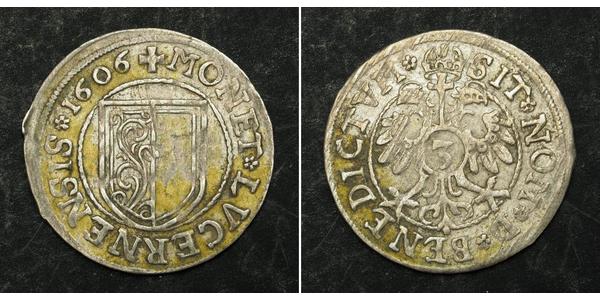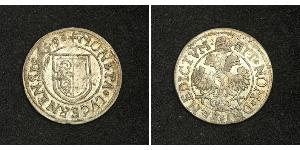3 Kreuzer (售价 $20.0)
Mint Year: 1606 Reference: KM-9. Denomination: 3 Kreuzer (Groschen) Condition: Minor deposits, otherwise about XF! Diameter: 21mm Weight: 1.53gm Material: Silver
Obverse: Shield of the Canton of Luzern within circle. Legend: + MONETA * LVCERNENSIS * I606 *
Reverse: Crown above double-headed eagle with cross-topped orb at chest containing value (3). Legend: SIT * NOM * DNI * BENEDICTVM *
Lucerne is a city in north-central Switzerland, in the German-speaking portion of that country. Lucerne is the capital of the Canton of Lucerne and the capital of the district with the same name.
After the fall of the Roman Empire beginning in the 6th century, Germanic Alemannic peoples increased their influence on this area of present day Switzerland. Around 750 the Benedictine Monastery of St. Leodegar was founded, which was later acquired by Murbach Abbey in Alsace in the middle of the 9th century, and by this time the area had become known as Luciaria. In 1178 Lucerne acquired its independence from the jurisdiction of Murbach Abbey, and the founding of the city proper probably occurred this same year. The city gained importance as a strategically located gateway for the growing commerce from the Gotthard trade route.
By 1290 Lucerne became a good-sized, self-sufficient city with about 3000 inhabitants. About this time King Rudolph I von Habsburg gained authority over the Monastery of St. Leodegar and its lands, including Lucerne. The populace did not appreciate the increasing Habsburg influence, and Lucerne allied with neighboring towns to seek independence from Habsburg rule. Along with Lucerne, the three other forest cantons of Uri, Schwyz and Unterwalden formed the "eternal" Swiss Confederacy, known as the Eidgenossenschaft, on November 7, 1332. Later the cities Zurich, Zug and Bern joined the alliance. With the help of these additions, the rule of Austria over the area was ended. The issue was settled through Lucerne's victory over the Habsburgs in the Battle of Sempach in 1386. For Lucerne this victory ignited an era of expansion. The city shortly granted many rights to itself, rights which had been withheld by the Habsburgs until then. By this time the borders of Lucerne approximately matched those of today.
In 1415 Lucerne gained Reichsfreiheit from Emperor Sigismund and became a strong member of the Swiss confederacy. The city developed its infrastructure, raised taxes, and appointed its own local officials. The city's population of 3000 dropped about 40% due to the Black Plague and several wars around 1350.
In 1419 town records show the first witch trial against a male person.
Among the growing towns of the confederacy, Lucerne was especially popular in attracting new residents. As the confederacy broke up during Reformation after 1520, most cities became Protestant but Lucerne remained Catholic. After the victory of the Catholics over the Protestants in the Battle at Kappel in 1531, the Catholic towns dominated the confederacy. The future, however, belonged to the Protestant cities like Zurich, Bern and Basel, who defeated the Catholics in the second Villmerg War in 1712. The former prominent position of Lucerne in the confederacy was lost forever. In the 16th and 17th centuries, wars and epidemics became steadily less frequent and as a result the population of the country increased strongly.
Lucerne was also involved in the Swiss peasant war of 1653.
In 1798, nine years after the beginning of the French Revolution, the French army marched into Switzerland. The old confederacy collapsed and the government became democratic. The industrial revolution hit Lucerne rather late, and by 1860 only 1.7% of the population worked in industry, which was about a quarter of the countrywide rate at that time. Agriculture, which employed about 40% of the workers, was the main form of economic output in the canton. Nevertheless, industry was attracted to the city from areas around Lucerne. From 1850 to 1913, the population quadrupled and the flow of settlers increased. In 1856 trains first linked the city to Olten and Basel, then Zug and Zurich in 1864 and finally to the south in 1897.
Only 1$ shipping costs for each additional item purchased!
2 Florin / 2 Gulden 奥匈帝国 (1867 - 1918) 銀 弗朗茨·约瑟夫一世 (1830 - 1916)
本组有 19 钱币 / 18 售价
⇑
5 Mark 巴伐利亞王國 (1806 - 1918) 金 路德维希二世 (巴伐利亚)
本组有 46 钱币 / 44 售价
⇑





 English
English






-300-150-KgQKX9ISLlMAAAFYVIy668M0.jpg)

-300-150-bbsKbzbiVAcAAAFLb5GjltmE.jpg)






